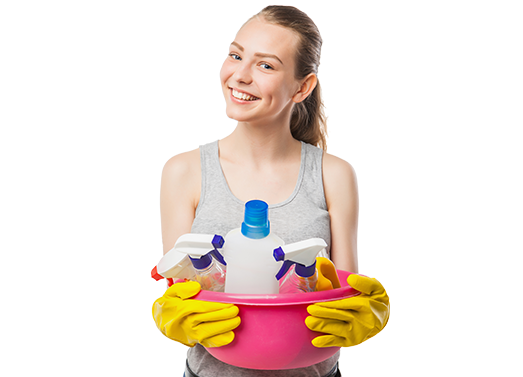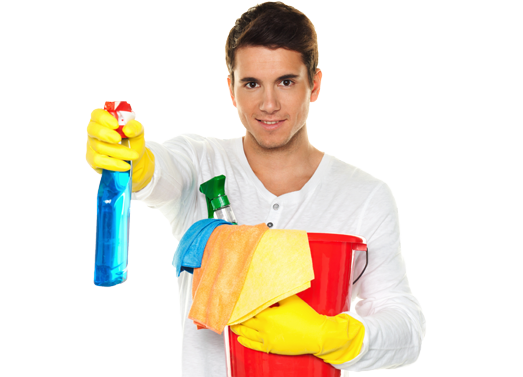Say Goodbye to Allergens: Crafting a Dust-Free Home
Posted on 30/05/2025
Say Goodbye to Allergens: Crafting a Dust-Free Home
Allergy sufferers know the struggle--itchy eyes, runny nose, sneezing fits that start as soon as you step through your door. But your home should be your haven, not a hotbed for dust and irritants. Eliminating allergens and controlling dust is entirely possible with the right strategies. This comprehensive guide dives deep into how you can create a dust-free home and finally say goodbye to those pesky allergens.

Understanding Allergens and Household Dust
Before embarking on your mission to craft a dust-free environment, it's important to understand what you're up against. Household dust is more than just a nuisance--it's a combination of skin flakes, textile fibers, pet dander, mold spores, pollen, and even tiny insect parts. These microscopic substances are prime triggers for allergy symptoms.
Common indoor allergens include:
- Dust mites
- Pet dander
- Mold spores
- Pollen
- Cockroach particles
These irritants can lurk in your carpets, upholstery, bedding, and even your air vents, making it essential to adopt a systematic approach to allergen removal and dust reduction at home.
Benefits of Maintaining a Dust-Free Home
- Reduced allergy and asthma symptoms
- Improved air quality for all occupants
- Enhanced sleep and overall comfort
- Extended lifespan of furniture and electronics
- A cleaner, more inviting living environment
Prioritizing a dust-free household not only helps allergy sufferers, but contributes to everyone's well-being--making your living space truly feel like home.
Essential Steps to Creating a Dust-Free Home
1. Effective Cleaning Techniques for Dust and Allergens
Routine cleaning is the cornerstone of an allergen-free home. However, how you clean is just as important as how often. Here are some expert dust-elimination techniques:
- Use a damp microfiber cloth for dusting surfaces. Unlike dry dusters, a damp cloth traps particles instead of releasing them into the air.
- Vacuum weekly, but opt for a vacuum with a HEPA filter. Standard vacuums may spew dust back into the air, but HEPA filters capture even the tiniest particles.
- Mop hard floors regularly. Dry sweeping can lift dust; a damp mop keeps it contained.
- Wash bedding and curtains in hot water (at least 130?F/54?C) weekly to kill dust mites and remove other allergens.
- Don't forget overlooked spots such as baseboards, vents, ceiling fans, and window sills.
2. Minimize Clutter and Dust Traps
Clutter is the enemy of a dust-free house. Piles of magazines, knick-knacks, and unused items all provide surfaces for dust to settle. To reduce household allergens:
- Declutter rooms regularly; donate or toss unused items.
- Store items in closed cabinets or bins rather than on open shelves.
- Choose furniture with easy-to-clean surfaces and simple designs (think: less ornate, fewer grooves).
3. Upgrade Your Filtration and Ventilation
Proper air filtration and ventilation play key roles in allergy prevention. Take these measures to bolster your home's defense:
- Install high-quality air filters with a MERV rating of at least 11 in your HVAC system. Change or clean them every 1-3 months.
- Consider adding an air purifier--especially in bedrooms or living areas. HEPA air purifiers efficiently trap airborne allergens.
- Keep windows closed during pollen season and use exhaust fans in kitchens and bathrooms to manage moisture.
- Check and clean air ducts annually to prevent dust blowback.
4. Choose Allergen-Resistant Furnishings and Flooring
The materials you select for furniture, flooring, and decor can make a huge difference in allergen control. Follow these suggestions:
- Opt for hardwood, tile, or linoleum floors over carpeting. Rugs, if needed, should be lightweight and washable.
- Use washable slipcovers and curtains that can be laundered frequently. Avoid heavy drapes and upholstery.
- Encase pillows, mattresses, and box springs in dust-mite-proof covers for added protection.
- Choose leather, vinyl, or tightly woven fabric for sofas and chairs.
5. Control Indoor Humidity
High indoor humidity fosters mold growth and dust mites. To achieve a dust-free, allergen-reduced environment:
- Maintain humidity levels between 30-50%. Use a dehumidifier if needed, especially in basements.
- Promptly fix leaks or drips to prevent dampness.
- Avoid indoor drying of laundry to reduce excess moisture.
Room-by-Room Guide to Eliminating Allergens at Home
Living Room
- Vacuum upholstery and cushions weekly, and launder covers (if removable) often.
- Minimize throw pillows and plush decor which trap dust.
- Wipe down electronics and surfaces with microfiber cloths.
- Move furniture for a thorough clean at least once a month.
Bedroom
- Launder bedding, pillowcases, and mattress covers weekly in hot water.
- Remove heavy curtains, extra cushions, and stuffed animals if possible.
- Store off-season clothes in closed bins or vacuum-sealed bags.
- Keep pets off the bed to reduce dander and hair accumulation.
Kitchen
- Wipe counters, cabinets, and shelves frequently.
- Use an exhaust fan when cooking to vent moisture and particles.
- Empty the trash and clean under appliances regularly to deter pests.
- Keep food in airtight containers to prevent attracting allergens like cockroach residue.
Bathroom
- Use mildew-resistant shower curtains and rugs.
- Run an exhaust fan or open a window during and after showers to reduce humidity.
- Wash bath mats and towels weekly.
- Check for leaks and repair promptly to avoid mold growth.
Special Considerations for Allergy-Free Living
Managing Pet Allergens
Pet owners know how quickly pet hair and dander can accumulate. For a truly allergen-reduced home:
- Bathe and groom pets regularly, ideally outdoors.
- Keep pets out of bedrooms and wash their bedding weekly.
- Vacuum floors and upholstery frequently, paying special attention to corners and under furniture.
Integrated Pest Management
Cockroaches are a major source of indoor allergens. To keep their population at bay:
- Seal cracks and crevices around your home's foundation and cabinets.
- Do not leave dirty dishes out overnight.
- Regularly clean the kitchen and pantry.
- Use safe pest control methods or contact professionals.
Advanced Strategies to Keep Home Dust-Free
Routine HVAC Maintenance
- Change HVAC filters regularly to prevent dust and debris buildup.
- Schedule annual professional duct cleaning for optimal air quality.
Robotic Vacuum and Smart Tech
- Invest in a robotic vacuum to keep floors clear between deep cleans.
- Use smart air purifiers that track real-time air quality.
Green Cleaning Solutions
- Use non-toxic cleaners to avoid introducing additional irritants.
- DIY cleaning sprays made with vinegar, baking soda, or essential oils can be effective and safe for allergy sufferers.

Frequently Asked Questions About Maintaining an Allergen-Free, Dustless Home
How often should you clean to minimize allergens?
Ideally, dusting and vacuuming should occur at least once per week. High-traffic areas or homes with pets may require more frequent cleaning. Don't forget to launder bedding and curtains regularly for maximum allergen control.
Are air purifiers worth it for dust allergies?
Yes, HEPA air purifiers can trap the vast majority of airborne allergens, making them a worthwhile investment, especially in bedrooms and common areas.
Can you eliminate all dust from a home?
While it's impossible to remove 100% of dust, you can dramatically reduce levels--thereby minimizing allergic reactions--by following the systematic strategies in this guide.
Conclusion: Start Your Journey Toward a Dust-Free, Allergen-Free Home Today
Saying goodbye to allergens and achieving a truly dust-free home is a realistic goal--and it pays off with better health, comfort, and peace of mind. By adopting a proactive cleaning schedule, optimizing air filtration, using smart allergen-resistant products, and paying attention to humidity, you transform your living space into a sanctuary from allergies.
Start small, but stay consistent. Whether you're managing severe allergies or simply want a cleaner, fresher environment, the steps outlined here will help you craft and maintain an allergen-free, dustless home for years to come. Breathe easier--your journey to a healthier home starts now.



